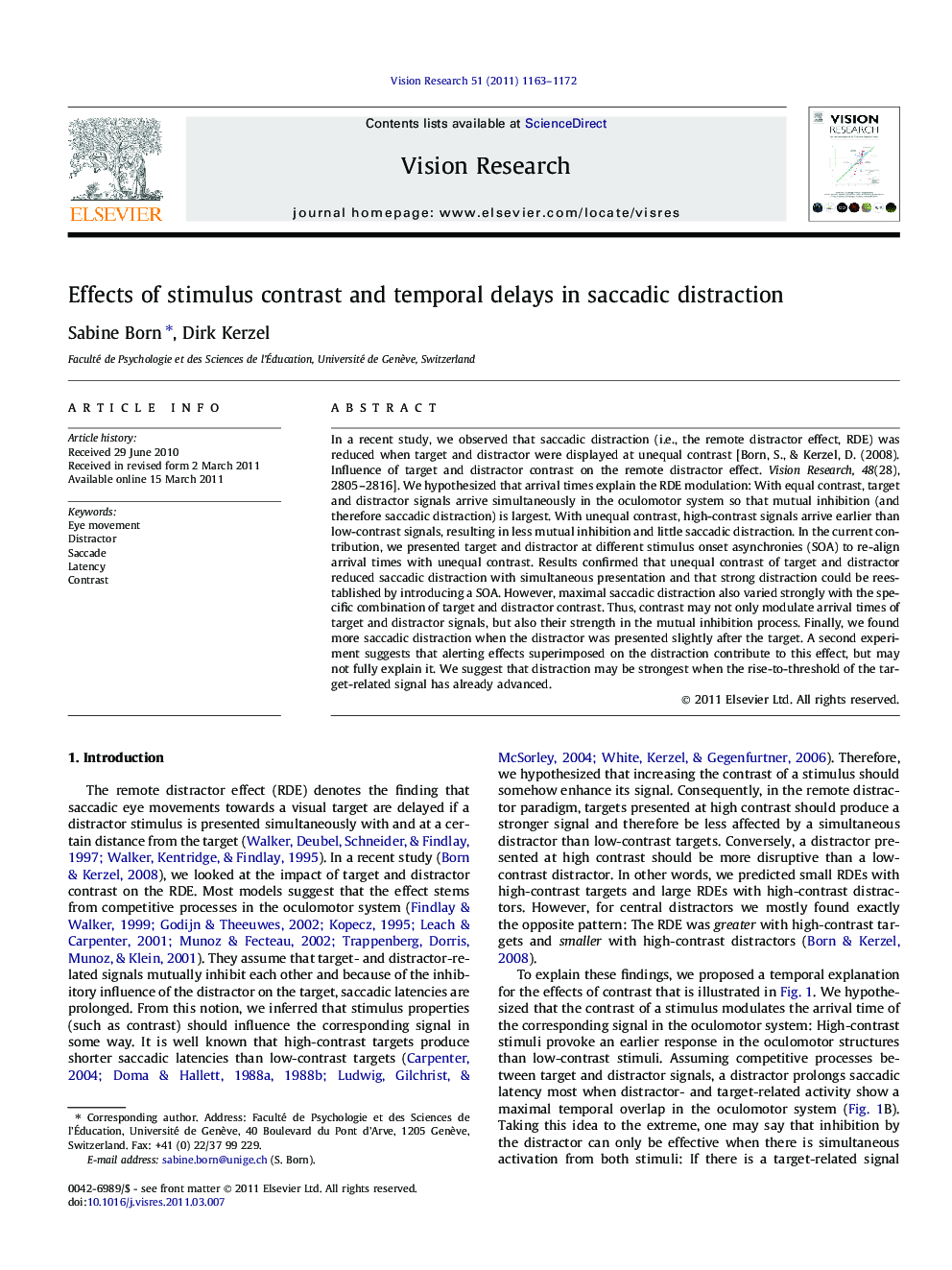| کد مقاله | کد نشریه | سال انتشار | مقاله انگلیسی | نسخه تمام متن |
|---|---|---|---|---|
| 4034287 | 1263443 | 2011 | 10 صفحه PDF | دانلود رایگان |

In a recent study, we observed that saccadic distraction (i.e., the remote distractor effect, RDE) was reduced when target and distractor were displayed at unequal contrast [Born, S., & Kerzel, D. (2008). Influence of target and distractor contrast on the remote distractor effect. Vision Research, 48(28), 2805–2816]. We hypothesized that arrival times explain the RDE modulation: With equal contrast, target and distractor signals arrive simultaneously in the oculomotor system so that mutual inhibition (and therefore saccadic distraction) is largest. With unequal contrast, high-contrast signals arrive earlier than low-contrast signals, resulting in less mutual inhibition and little saccadic distraction. In the current contribution, we presented target and distractor at different stimulus onset asynchronies (SOA) to re-align arrival times with unequal contrast. Results confirmed that unequal contrast of target and distractor reduced saccadic distraction with simultaneous presentation and that strong distraction could be reestablished by introducing a SOA. However, maximal saccadic distraction also varied strongly with the specific combination of target and distractor contrast. Thus, contrast may not only modulate arrival times of target and distractor signals, but also their strength in the mutual inhibition process. Finally, we found more saccadic distraction when the distractor was presented slightly after the target. A second experiment suggests that alerting effects superimposed on the distraction contribute to this effect, but may not fully explain it. We suggest that distraction may be strongest when the rise-to-threshold of the target-related signal has already advanced.
► Saccadic distraction depends on contrast and temporal delay (SOA) of the distractor.
► SOA compensates for reduced distraction by unequal contrast of target and distractor.
► Saccadic distraction is stronger with high distractor contrast.
► Saccadic distraction is stronger when distractor is shown slightly after the target.
► Distractor acts like a general “interrupt” signal caused by its abrupt onset.
Journal: Vision Research - Volume 51, Issue 10, 25 May 2011, Pages 1163–1172